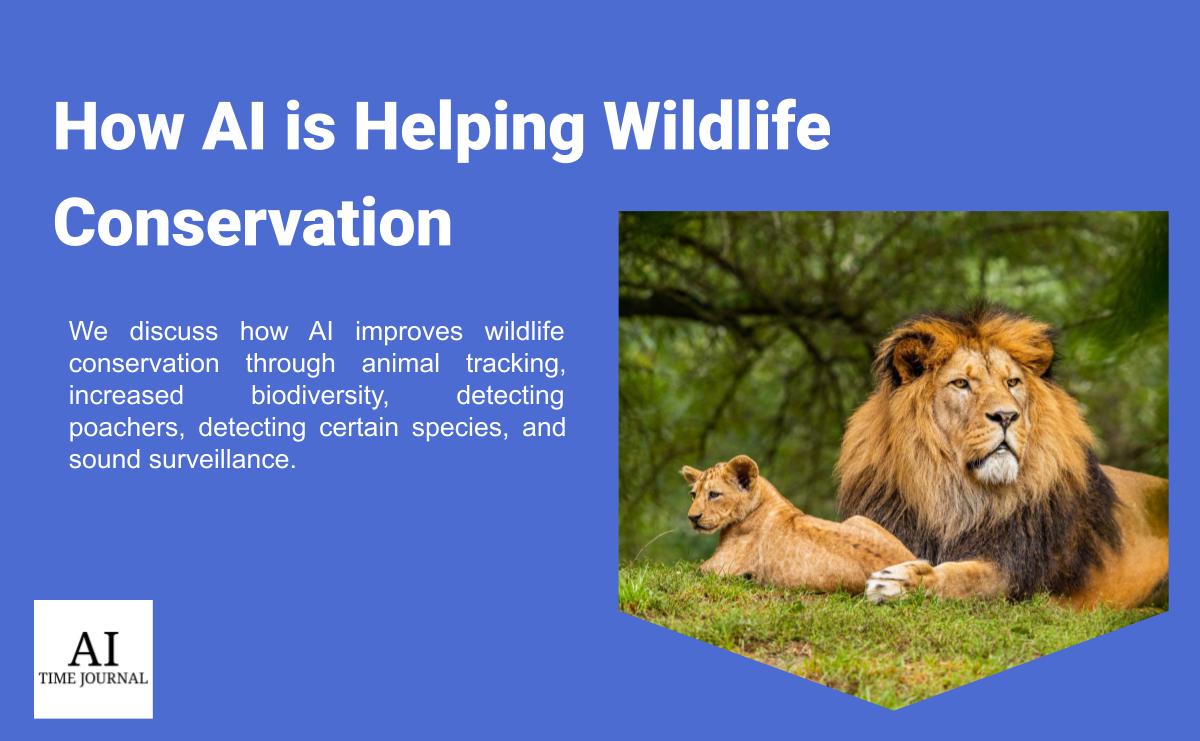
AI implementation has brought many benefits to a multitude of fields. One of the fields that has benefitted the most from AI has been wildlife conservation. The use of AI for wildlife services has helped to ensure that animals and humans are able to live more harmoniously in their environments.
There has been interference from outside sources which massively hinders the population size and diversity in the environment, such as poaching and environmental changes. Thanks to the power of AI and human help, nature is slowly being restored to its former beauty.
Animal Tracking
Since patterns such as tracks, rubbings, droppings, etc. among multiple species are relatively similar to the untrained eye, sometimes it can be hard to know which animals are which if the movement patterns change or some external catastrophe happens. This is where AI has come in handy; through AI, we have made tracking animals and preserving their habitats very simple.
One of the biggest projects involving this is Microsoft’s Wild Me, which uses information gathered through photographs in order to create a profile for a specific animal. By using those images and filtering them in the cloud, you can follow the animal’s activities. This utilizes a multitude of the different Azure AI programs to make the animals easily visualized.
Increased Biodiversity
To follow up with the previous point, the tactics used are not only for letting people learn how the animals behave. Through the use of these technologies, the AI will be able to track down animals that have left their environment to help them return home and make sure they do not become an invasive species or worse.
Another major challenge taken care of by AI is the issue of endangered species and ways to aid their survival. Rangers are able to use the tracking profile created by the AI to create a path that the animal will most likely take. This allows the rangers to predict and make sure they can get to the animal if they are in danger of any possible issue that might arise.
For more ways that AI helps the environment, check this article on how AI helps sustainability.
Detecting Poachers
Using a combination of AI-enabled drones and night-vision cameras, the AI can track the poachers and help the rangers stop them from hunting down the animals. The AI is also able to use sound surveillance to follow the movements of both animals and possible poachers, making the path-finding abilities far more accurate than they otherwise would be.
When dealing with illegal actions such as poaching, AI is still a useful method of controlling the situation. The AI will need to crunch down on these illegal activities to preserve the endangered animals. Thankfully, the developments of AI over its existence have helped to make sure that these crimes are cracked down on.
Species Differentiation
When identifying different animals in the wild, there are some definitive animals that could not be confused, but in most cases, there are very similar adaptions from behavior and physical traits between animals which could lead to confusion.
Though there are more straightforward ways to differentiate the species through photos and sound surveillance, the primary way that scientists use is to identify physical features such as the plumage of birds. In many cases, the eye can mislead us, so the AI program has found a way to use photos and knowledge of the animals in the cloud to quickly identify them. This method leads to less intrusion by the rangers and scientists and also gives them a good view of how the animals would act in nature rather than in captivity.
For more information on the technology used for this, check this article about cloud architecture.
Sound Surveillance
As stated before, the use of ways to detect outside interference is always important to wildlife preservation, and the manipulation of sound surveillance is as important as any others. The ability to hear if anything is odd or out of place is key to figuring out how to help the local ecology.
Some of the most prevalent sound surveillance systems are those put into the rainforests as they can be a main source of protection. The trees in these forests are the main habitat for the many denizens. The reliance on trees combined with the threat placed on them by humans creates a terrible situation for the animals. Issues with illegal logging have made habitats shrink massively, but sound surveillance makes this activity easily traceable via distinct sounds such as chainsaws. The ability to hear these noises gives the AI the capabilities to identify and stop these illegal antics.
